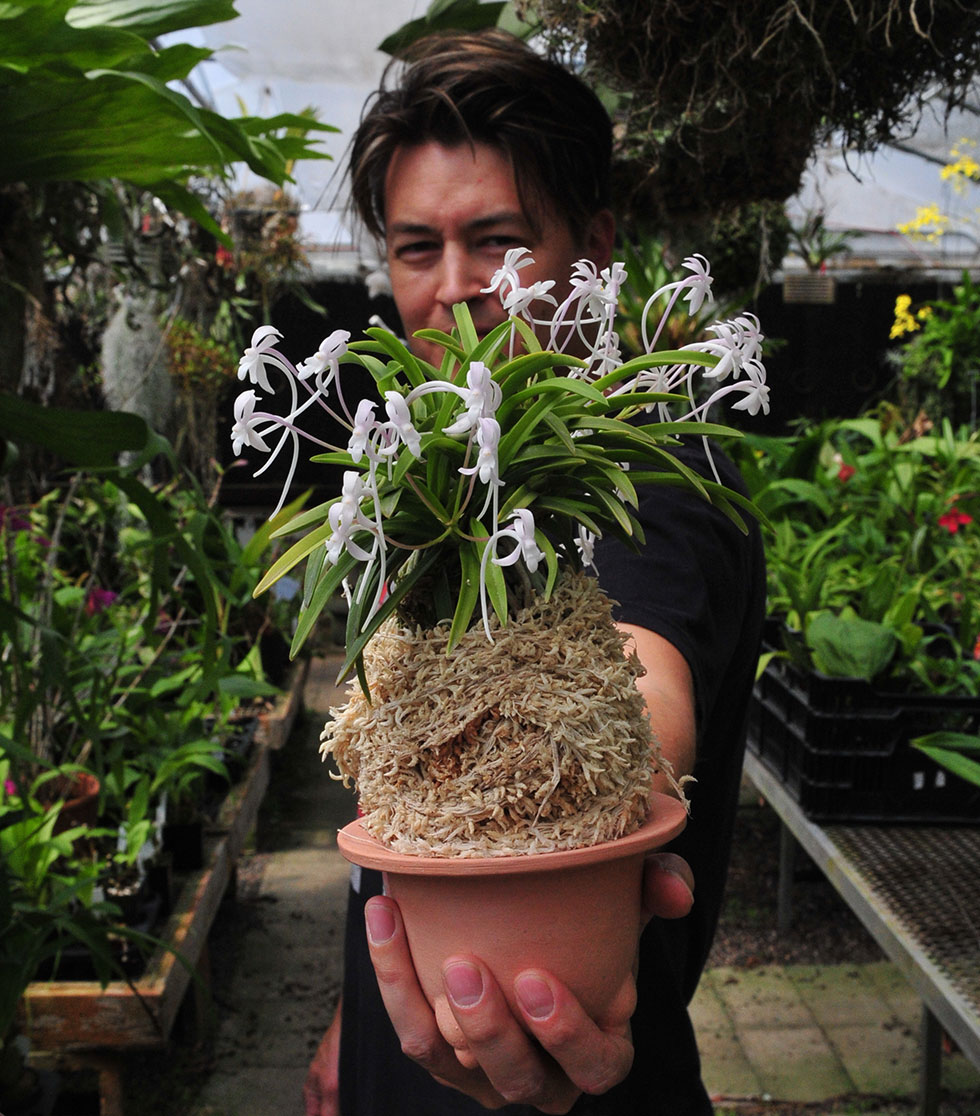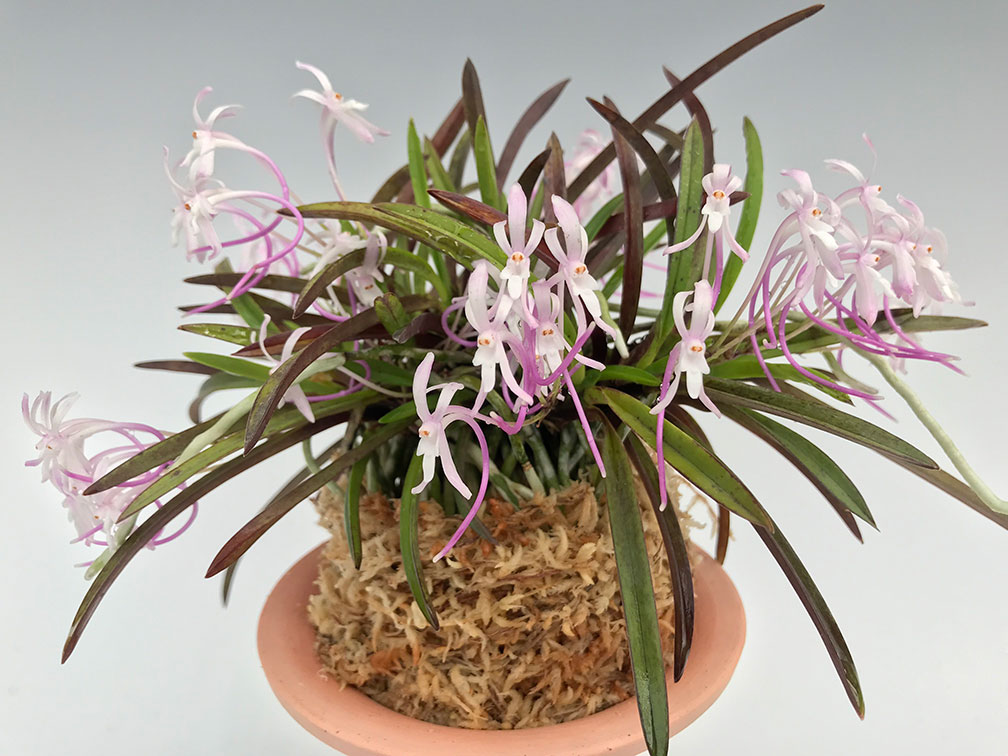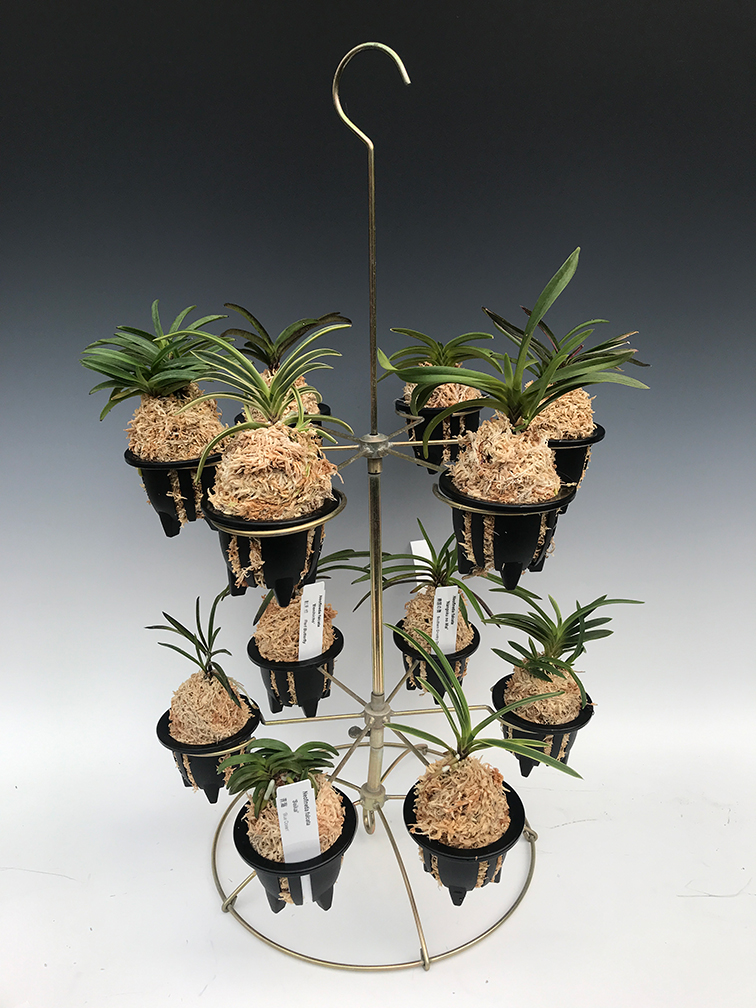The Growing Popularity of Neofinetia falcata
Posted by Jason Fischer on May 25, 2019

I’d like to take a moment to talk about my favorite orchid, the Neofinetia falcata. It is a plant that grabbed my curiosity as a child. It was always so exotic, so unique, and something to look forward to see flower and smell its lovely fragrance in the summertime. I remember my father talking about how it was one of the only plants we had that came from Japan, which kept me interested as it was part of my heritage (bless my lovely Japanese mother) that connected myself to the orchid world. I never had any idea there was much beyond the standard Amami form with their thick leaves and white flowers with nectaries.
After living in Japan for 2 years, I returned to the US to continue helping the family business, but felt something needed to be done about tying my experience in Japan with the company. Of course, I decided that importing varieties of Neofinetia and other Japanese species would be the best way to do it! Since then, I’ve been hooked, and it is a culture that is spreading its way across the west.
Neofinetia are fun to own for so many reasons, including:
- Compact size
- Uniqueness
- Attractive foliage
- Many varieties to collect
- Fragrance
- Fit in a windowsill (they actually prefer windowsill culture over terrariums)
- Easy to grow
- Accessories available for them (decorative pots, hangers, etc.)

You may be new to Neofinetia, or you may have known about them for years. One thing is for sure: their popularity is growing. They display well and are an easy conversation piece if one is set at the table. It is a culture that began in Japan in the late 1800s and is considered the first indoor orchid houseplant of Japan. Dating back even further, a Chinese horticultural book from the 1400s has information on the ‘Wind Orchid’, as it is a plant that grows on tree branches in the wild (they do like airflow as well). They are like the bonsai of the orchid world, as they are appreciated for their foliar shape, size and variegation. The root tips have different colors as well and are most active from spring through fall. Their flowers are something to look forward to and typically emerge in June or July. They are fragrant both day and night (quite possibly the only orchid that is) with a stronger scent during the evenings, somewhat reminiscent of jasmine.

Why try one? First of all, they are fairly easy to grow for any level of orchid experience. Secondly, they are from a region which is limited to a vast variety of orchids in the trade, so they are unique to own and with hundreds of varieties being in the trade, you will have a hard time collecting them all! The prices can range from low to extremely high based on rarity. But every Neofinetia is certainly a special plant to own, regardless of its price. There is an art form to repotting them as well, with a therapeutic and satisfying experience.
Let’s talk a bit about culture.
They can be grown in almost any potting material as long as they have good air to the root system. The traditional potting style is with long fiber sphagnum moss in a container with good airflow. I made a YouTube video on this technique some time ago. Some with high humidity prefer being grown in baskets like other Vandaceous plants and some like the good old standard bark mix. They are highly adaptable to your potting style of choice. Simply put, water often when temperatures are warm and less when they are cold.
Here is a video we took back in 2013 that shows some examples of Neofinetia and has information for beginners that is still relevant:
Mobile users: If you are experiencing issues playing the video below, please click here for the YouTube video.
Here is another video we took in July of 2014 about the different flower types of Neofinetia (Note: We no longer offer the Neo bark mix shown at end of video):
There are also some Facebook groups dedicated to Neofinetia falcata if you do a search, one with 2.3K members and growing, giving you plenty of space to express your interest and share experiences/photos with the other members.
At our nursery, most mature Neofinetia should flower in July. The secret to blooming them well is to never let them go completely dry (which is acceptable in the cooler winter months) once new roots emerge in the spring. To get the full flower stem development experience, many order in May/June. However, I usually start listing them as ‘In Spike’ when we see the spikes start to emerge from the leaf axis.
To sum it up, if you’re looking to try something that won’t take up too much space and is fun to look at all year round, then this is the plant for you! I am always updating our online availability and will continue to do so as I import new plants in the spring and also repot/divide from our own collection throughout the spring/summer months, so definitely check back every so often to see new plants.
Click here to view our current Neofinetia selection!
Happy Growing!
Jason Fischer